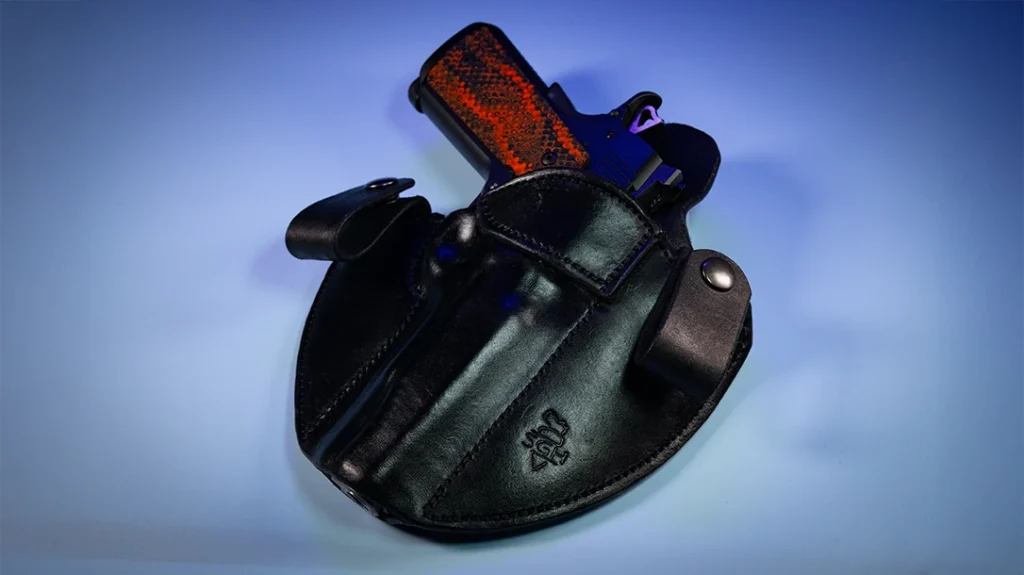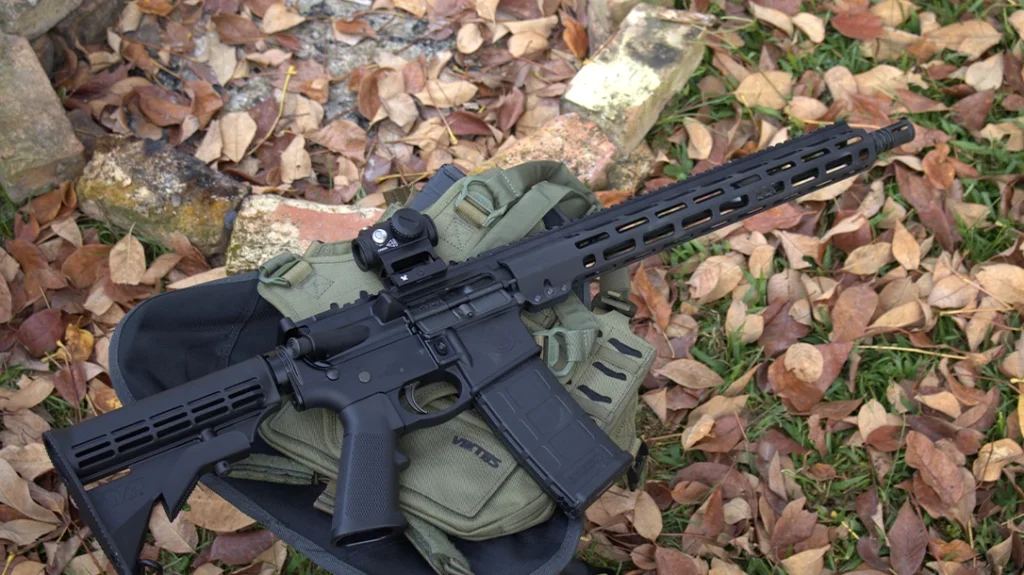Long guns such as carbines require both hands to shoot and manipulate them effectively. Because they tend to be long and can be heavy, especially after a couple of hours of shooting, having the means to attach them to your body while giving your guns a rest is a welcome relief. Rifle slings help you do just that in addition to freeing your hands for other tasks, like loading mags and managing gear. Some slings can even help you stabilize your aim for more accurate shots. Gun slings feature many variations. Single- and two-point slings are the most commonly employed for tactical carbine shooters, with a few opting for three-point slings. Today we will examine the Pros & Cons of Single, 2- & 3-Point Rifle Slings.

Picking the Right Sling – Single, 2 or 3 Point?
Single-point rifle slings create a loop that goes over the head, with the strap placed on your strong-side shoulder, which runs diagonally across the body. They usually attach to the carbine with a quick-detach device at the rear of the lower receiver. These are usually attached via QD mount points on the rifle. These types of gun slings keep the carbine oriented toward the front and centerline of the body, making it easy for the shooter to grip the rifle from its resting position. Aside from being easy to put on and remove, the real strength of this design is that it makes switching the carbine from either shoulder easier. This feature makes it popular with certain law enforcement and military users.
Advertisement — Continue Reading Below
Its weakness is that the gun dangles freely when not held in place. When you are on the move, and the gun is not supported, they’ve been known to interfere with movement and even tweak the frank and beans in some painful instances. For those who need to carry their rifles for long periods, you’ll want to know that single-points offer very little in terms of weight distribution, making them uncomfortable to use for long periods of time.
| Positives: | Great for shoulder transitions; easy to use; quickly disconnects from the carbine. |
| Negatives: | Dangles the carbine when not held; poor weight distribution. |

Advertisement — Continue Reading Below
Two Point Slings
The modern two-point sling with carbines is probably the most popular style today. Modern two-point gun slings differ from traditional types, featuring adjustment loops or hardware to adjust length quickly. They connect at two points: One at the front and one on the carbine stock, directly to the carbine or with quick-detach hardware. Depending on your method of attachment, specialized sling mounts may be required. You can wear a two-point gun sling in several ways, including over one shoulder, across the front of the body, with the carbine resting diagonally on your back, or across your body with the carbine on your front side.
Adjustable two-point gun slings shine when used as shooting aids. Because they are designed for quick adjustment, they can be rapidly and effortlessly snugged tight to help brace the rifle. This allows for a more stable shooting position, resulting in a more accurate shot. This style of sling doesn’t have many weaknesses, except it does require the user to unsling when transitioning from the strong to weak side shoulder and vice versa.
| Positives: | Multiple methods of use, doubles as a shooting aid, comfortable extended carry. |
| Negatives: | Need to unsling for transitional shoulder shooting. |
Advertisement — Continue Reading Below

Three Point Slings
The name three-point is a misnomer since three-point rifle slings only attach to the carbine at two points. The third point is the shooter, him or herself, with a strap that wraps around the body. By and large, the majority of shooters no longer use three-point gun slings. A three-point sling’s design secures the rifle to the user, which it does well. However, this type of sling can make movement between sling, carbine and you unduly restrictive.
The advantage of three-point gun slings is that the carbine remains securely attached to the shooter when it’s not held. The problem with these slings is that they can be complicated to install and use. They may get hung up on gear and interfere with the operation of the gun, especially AR-15-type rifles. Transitional shooting can be difficult with this type of gun sling.
Advertisement — Continue Reading Below
| Positives: | Secure, the sling keeps your rifle out of the way while you’re moving |
| Negatives: | Complicated, interferes with gun operation, forget about transitioning shoulders |
Pros & Cons of Single, 2- & 3-Point Rifle Slings
While each sling has its own pros and cons, it comes down to personal preference. Regardless of the style of sling you choose, buy quality gear.
For more information, visit:https://www.blueforcegear.com/
Advertisement — Continue Reading Below
























